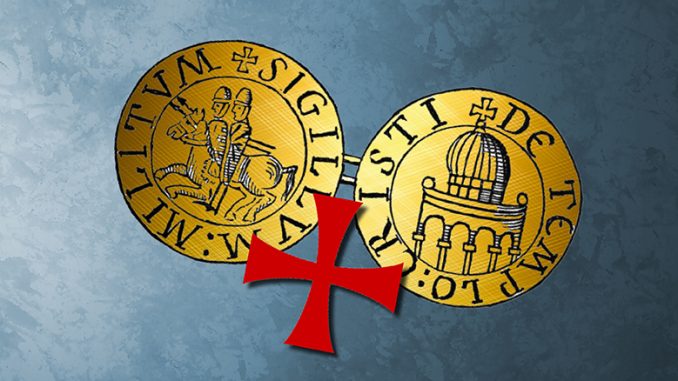
The Templars and the Ark of the Covenant by Patrick Byrne Author of Templar Gold
To answer this question we must attempt to peer back through the historical mists to try and determine whether anyone – let alone the Templars – could have found the Ark. The first issue, however, is whether the Ark could have been sufficiently well hidden so as to avoid being destroyed or plundered during the final sack of the temple by Titus in AD 70. The Bible provides us with a clue to the answer. The last time that the Bible mentions the Ark is in 2 Chronicles 35:3 when King Josiah ordered that it should be returned to the temple.
“Put the Holy Ark in the house which Solomon the son of David king of Israel did build; it shall not be a burden upon your shoulders.”
We can date this event to around 623 BC and a number of conclusions can reasonably be drawn from this record.
- The temple priests had moved the Ark to safe keeping during the preceding turbulent times and the Holy Ark was returned to the temple because there is no reference to the fact that it was not, and that would have been an important event.
- Those in authority, including King Josiah, were well aware that the Ark had been safely hidden until the time that he ordered it to be returned to the temple. The fairly off-hand manner in which this event is dealt with indicates that it was not unusual to hide the Holy Ark during periods of crisis.
- Whatever and wherever the hiding place was, it had successfully protected the Ark between 950 BC when Solomon built the first temple and 623 BC when King Josiah gave his direction to the temple priests. The effectiveness of the hiding place is demonstrated by the knowledge that it remained a secret on at least four occasions when Jerusalem was over-run during those 327 years.
Having shown that the Ark could have remained hidden during the periods of Roman and later Muslim occupation leads to the next question of why would the Templars search for the Ark? The Knights Templar were conceived in the French city of Troyes – pronounced trois meaning three – which was the capital city of Champagne. At the same time that the Templars were being considered, the man who would become Saint Bernard during his own lifetime was beginning his monastic career with the Cistercians. The Cistercian monks were – at that time – heavily involved in deciphering Hebrew texts. The link between the two strands was Hughes, Count of Champagne. Hughes began his adulthood as a monk before taking on the mantle of Count. He first visited Jerusalem as a pilgrim in 1104 and only a few years later nine of his vassals returned to found the Knights Templar quartered in the Al Aqsa mosque on Temple Mount. Stories abound that the Templars spent the first 10 years or so of their existence digging under Temple Mount. Captain Wilson, Lieutenant Warren and a team of Royal Engineer found strong support for these rumours. In 1867, they re-excavated the area and uncovered tunnels extending vertically, from the Al Aqsa mosque, for some 25 metres before fanning out under the Dome of the Rock which is generally thought to be the site of King Solomon’s temple. Crusader artefacts found in these tunnels attest to Templar involvement.
Elsewhere on this Web Site, the strong connection between the Knights Templar and the Freemasons is explored.
The earliest written copies of Masonic ritual state unequivocally that the ancient masons found the Ark of the Covenant hidden in a cave under the site of King Solomon’s temple.
To learn more of Patrick’s theories, be sure to read Templar Gold: Discovering the Ark of the Covenant.
About Us
We hope you enjoyed The Templars and the Ark of the Covenant
TemplarHistory.com was started in the fall of 1997 by Stephen Dafoe, a Canadian author who has written several books on the Templars and related subjects.
Read more from our Templar History Archives – Templar History
